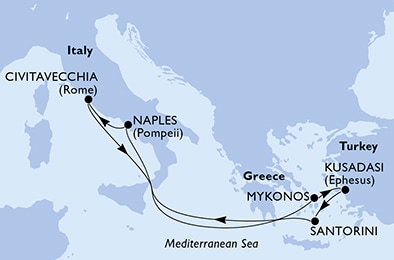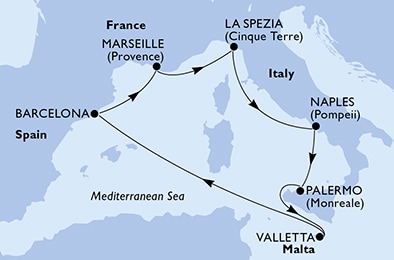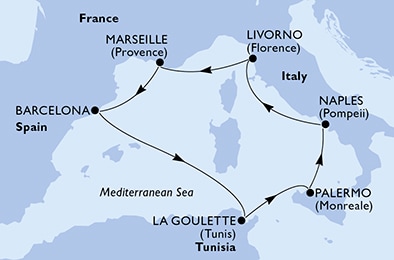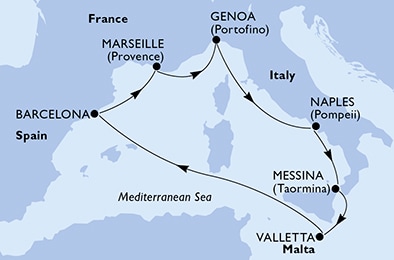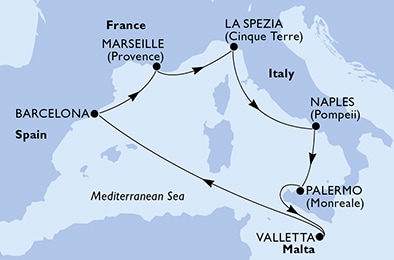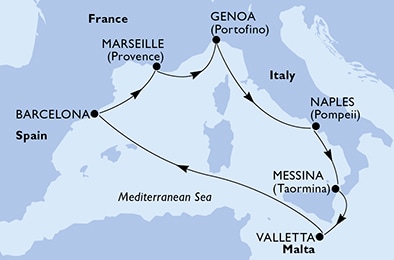
Port Naples
Naples, often referred to as the Gateway to the Mediterranean, is a significant cruise ship port in Italy. It is strategically located, making it a popular stop for cruise ships journeying through the Mediterranean. The port of Naples is vital for the city's economy, attracting thousands of tourists annually, which boosts local businesses and the tourism sector.
Cruise ships in Naples offer a range of activities and tours for their passengers. The city is rich in historical sites, including the ancient ruins of Pompeii and Herculaneum, which are often included in shore excursions. The stunning Amalfi Coast, famous for its breathtaking coastal views, and the beautiful island of Capri, known for its luxury boutiques and high-end restaurants, are also popular destinations for cruise ship passengers.
History
The Port of Naples, located in Naples, Italy, is one of the largest Italian seaports and one of the largest seaports in the Mediterranean Sea basin having an annual traffic capacity of around 25 million tons of cargo. This harbor's history dates back to the 8th century BC when it was first established by Greeks, which makes it one of the oldest operated ports in the world.
Over the centuries, the Port of Naples has seen various rulers and has been a significant maritime hub for different empires. In the Roman era, it served as a critical commercial port, facilitating trade across the empire. During the World War II, the port was severely damaged but was quickly rebuilt and expanded. Today, it not only serves as a crucial cargo terminal, but also as a vital ferry port, connecting numerous destinations across the Mediterranean.


 With bus transport to the port
With bus transport to the port












